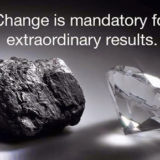
lients and change practitioners often ask us, “what’s the best change management methodology?” Unlike ten years ago, today there is a plethora of change methodologies and models from which to choose.
While the processes, activities, and tools vary by methodology, many of them share the same principles and practices.
It is more important to execute thoroughly and consistently with whatever change methodology you choose than it is to select the right one.
There are good reasons why companies would want to standardize on a single change methodology:
- Promotes a common language and way of thinking about change management
- Provides a consistent set of activities and tools across the organization
- Prevents proliferation of competing methodologies, which cause confusion and waste time
- Faster and more cost-effective than building an internal approach from scratch
Below is a summary (in alphabetical order) of change management methodologies – some are classics and some are relatively new. You can’t go wrong with any of these.
If your preferred methodology is not on the list, please mention it in the “Leave a Comment” box below.
![]()
Being First’s Change Leader’s Roadmap
The Change Leader’s Roadmap (CLR) is a change process methodology, providing strategic guidance and change tools to leaders and consultants designing and implementing change of any size or type. Leaders use the Roadmap to maximize results, land their initiatives on time and on budget, and catalyze new ways of being, organizing, and working.
Developed over thirty years of application in large organizations across all types of industries, government, military, and global nonprofits, the CLR provides the most comprehensive array of change tools for transformation on the market—so you not only know what to do, but how to do it.
- Prepare to Lead the Change
- Create Organizational Vision, Commitment & Capability
- Assess the Situation to Determine Design Requirements
- Design the Desired State
- Analyze the Impact
- Plan & Organize for Implementation
- Implement the Change
- Celebrate and Integrate the New State
- Learn and Course Correct
>> More info about The Change Leader’s Roadmap
Boston Consulting Group’s Change Delta
Boston Consulting Group’s Change Delta framework addresses the main factors why programs fail – clearly defined milestones that measure progress and commitment of senior leadership – as well as the broader hard and soft sides of change.
The Change Delta framework includes:
- Executional Certainty
- Enabled Leaders
- Engaged Organization
- Governance & PMO
>> More info about Change Delta
Bridges’ Transition Model
The Transition Model was created by change consultant, William Bridges, and was published in his 1991 book “Managing Transitions.” The main strength of the model is that it focuses on transition, not change. The difference between these is subtle but important. Change is something that happens to people, even if they don’t agree with it. Transition, on the other hand, is internal: it’s what happens in people’s minds as they go through change. Change can happen very quickly, while transition usually occurs more slowly.
The model highlights three stages of transition that people go through when they experience change:
- Ending, Losing, and Letting Go
- The Neutral Zone
- The New Beginning
>> More info about the Transition Model
ChangeFirst’s People Centered Implementation (PCI) Model
People Centered Implementation (PCI) describes six Critical Success Factors that you can use to deliver successful change at both an organizational and local level. These factors have been translated into a robust process which covers the key areas of implementation that Change Leaders need to excel at, in order to develop the critical mass of commitment required to succeed. The six Critical Success Factors are:
- Shared Change Purpose
- Effective Change Leadership
- Powerful Engagement Processes
- Committed Local Sponsors
- Strong Personal Connection
- Sustained Personal Performance
>> More info about ChangeFirst’s PCI Model
Emergent’s Accelerating Change & Transformation (ACT) Model
Accelerating Change & Transformation (ACT) is Emergent’s proprietary model for planning and implementing strategic change management in support of business initiatives. It includes six practices which are supported by numerous best-of-breed activities and tools. The ACT model has been honed over years of use on Fortune 500 and mid-market client projects.
- Plan the change
- Create a sense of urgency
- Lead the change
- Engage the people
- Align systems and structures
- Sustain the change
>> More info about the ACT model
General Electric’s Change Acceleration Process (CAP)
GE’s Change Acceleration Process (CAP) is a framework and toolkit for successfully implementing change. It is a non-linear model that focuses on making sure all the elements are considered and in place for a successful transition. Cap’s activities include:
- Leading Change
- Creating A Shared Need
- Shaping a Vision
- Mobilizing Commitment
- Making change last
- Monitoring progress
- Changing Systems and Structures
Implementation Management Associate’s Accelerated Implementation Methodology (AIM)
IMA’s Accelerating Implementation Methodology (AIM) is a 10-step change management approach associated with planning, implementing, and monitoring any change or initiative. The 10 steps are:
- Define the change
- Build agent capacity
- Assess the climate
- Generate sponsorship
- Determine change approach
- Develop target readiness
- Build communications plan
- Develop reinforcement strategy
- Create cultural fit
- Prioritize action
Kotter’s 8-Step Process for Leading Change
Dr. John Kotter’s 8-Step Process for Leading Change focuses on the importance of gaining buy-in. It is relatively simple to understand and works well in organizations that are organized in a relatively narrow organizational structure. The selling point is its simplicity, memorable eight steps and basis in Kotter’s thirty-plus years of research into organizational change.
- Establish a sense of urgency
- Creating the Guiding Coalition
- Developing a Change Vision
- Communicating the Vision for Buy-in
- Empowering Broad-based Action
- Generating Short-term Wins
- Never Letting Up
- Incorporating Changes into the Culture
>> More info about Kotter’s 8-Step Process
Kubler-Ross’ The Change Curve
The Change Curve is widely used in business and change management and there are many variations and adaptations. It is often attributed to psychiatrist Elisabeth Kubler-Ross, resulting from her work on personal transition in grief and bereavement. It is used to understand the stages of personal transition and organizational change. It helps you predict how people will react to change, so that you can help them make their own personal transitions, and make sure that they have the help and support they need. The phases are:
- Shock
- Denial
- Anger
- Fear
- Acceptance
- Commitment
>> More info about the Change Curve
LaMarsh Managed Change Approach & Methodology
Lamarsh’s Managed Change Model is both scalable and adaptable to implement change at any level. Managed Change supports large, complex, enterprise-wide implementations in global organizations as well as personal challenges.
- Identify the change
- Prepare the change
- Plan the change
- Implement the change
- Sustain the change
>> More info about LaMarsh’s Managed Change Model
Lewin’s Three Stages of Change
The Three Stages of Change is one of the cornerstone models for understanding organizational change, and was developed by Kurt Lewin back in the 1950s. His model is known as Unfreeze – Change – Refreeze, refers to the three-stage process of change he describes. Lewin, a physicist as well as social scientist, explained organizational change using the analogy of changing the shape of a block of ice.
- Unfreeze
- Change
- Refreeze
>> More info about Lewin’s Three Stages of Change
PRITCHETT’s Change Management Model
Founded in 1974 by Price Pritchett, Ph.D., PRITCHETT earned its reputation from groundbreaking work done in the areas of change management and merger integration. Known for their no-nonsense approach to complicated issues, PRITCHETT’s Change Management Model provides a simple phased approach for managing both the project and people sides of change initiatives. Their methodology consists of four phases:
>> More info about PRITCHETT’s Change Management Model
Prosci’s ADKAR
The ADKAR Model was first introduced in 1999 as an outcome-oriented approach to facilitate individual change. The model has taken hold as an easy-to-use and proven Change Management method, and is now one of the most widely used change management models in the world.
Effective Change Management requires control of the five key building blocks that form the basis of the Prosci ADKAR Model. The building blocks are:
- Awareness of the need for change
- Desire to participate and support the change
- Knowledge on how to change
- Ability to implement required skills and behaviors
- Reinforcement to sustain the change
Viral Change
Viral Change uses the power of a small set of well-defined non-negotiable behaviors, spread by small groups of highly connected individuals within the organization. Their peer-to-peer influence – more powerful than hierarchical one – creates new norms, new ways of doing, new cultures.
As a method, the Viral Change journey is divided into five phases, not all of them are as sequential as represented. The key focus for each phase is described below. The duration of each phase varies depending on where the change process starts. The five phases are:
- Discovery
- Development
- Engagement
- Diffusion
- Sustain
>> More info about Viral Change
Again, the biggest downfall of organizations is failing to use change management effectively, not so much the methodology they chose.












5 comments
ieva swanson
at 7:40 am
Thanks for this nice article!
I thought I’d mention that I just applied Dr. Diane Dormant’s model described in her book _The Chocolate Model of Change_. I completed my project under Dr. Dormant’s guidance as part of a master’s program, so I can verify that her model works for mid-level employees– it has a friendly, practitioner-oriented approach to facilitating acceptance of organizational change.
The 8 step model is organized around “CACAO” (change, adopters, change agent, organization)and, like the famous chocolate bean, focuses on making change palatable. The 8 steps are:
-Specify your C-A-CA-O
-Analyze the change
-Analyze the adopters
-Analuze the change agent
-Develop an action plan
-Analyze the organization
-Analyze the big picture
-Revise the action plan
The Chocolate model incorporates the research and ideas of Rogers, Lewin, Kotter, Bridges, Gladwell, Kubler-Ross and others.
denis
at 11:32 am
Interesting article but it does raise a key question for me. Are we clear what is the difference between a change model and a change methodology. Lewin has clearly a change model as has Bridges. On the other hand PROSCI has a methodology which includes the ADKAR change model.
Jesse Jacoby
at 12:50 pm
Denis,
Very fair point. Some of these are indeed more model-like than methodology-like — e.g., Lewin, Bridges, and even Kubler-Ross.
I have seen folks overly activities and tools onto these models thus making them more like practical methodologies, which is why I included them.
But, by standing alone by themselves, they are indeed more model than methodology.
Thanks for reading and contributing.
-J
Sandra Pickering
at 4:50 pm
Jesse,
Thank you for a great summary, very well-presented.
It would be interesting to explore the assumptions and beliefs underlying each model. (An idea for your next post? 🙂
We use a proprietary model that combines an evaluation of non-conscious biases with neuropsychological principles to embed behavioural change.
There are a few key beliefs (rooted in science) that underpin this – for example, habits are sustained by non-conscious emotions.
Sandra
Pingback: This Week’s Best in Change Management and Innovation